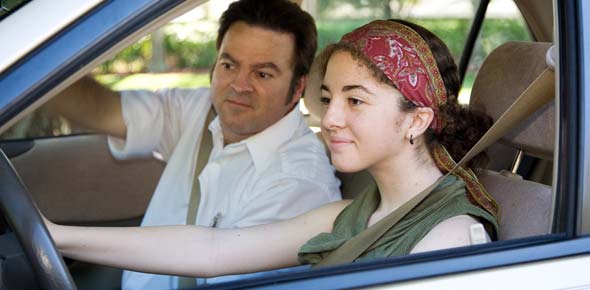Under normal circumstances you may do the following:
When you become aware that someone is trying to pass you, you must:(i)...
Unless otherwise indicated by a road traffic sign, the general you may...
When approaching a four-way stop, the driver must:
To avoid being fined, a driver must ensure that a small child sits:
When turning right or left at an intersection you must:
Seat belts must be worn:
When approaching an intersection you must stop if:
Under normal circumstances it is legal for a driver to allow a...
You are also not allowed to get a learners licence if you:(i) Had a...
A driver may:
When changing lanes, you must:
You may enter or cross a public road if:
When approaching a robot and the red light is flashing, you must:
Passengers may:(i) Use hand signals out of the window(ii) Ride in the...
Is your following distance safe if the vehicle in front of you...
To avoid a fine, you must produce your licence on request from a...
You may not pass another vehicle:(i) On a curve(ii) In misty...
Where are you not allowed to stop:(i) At any place where you would...
When making an urgent stop, it takes:(i) Longer if the vehicle is at a...
What is the longest time you may leave your vehicle parked in one...
When do you switch on your headlights:(i) From sunrise to sunset(ii)...
Under normal circumstances a driver may stop on a freeway to:(i) Pick...
Is a vehicle licence valid for:
What is the most important rule of the road in South Africa:
Under what conditions may you drive on the right-hand side of a...
You may not use your hooter except under the following circumstances:
If the vehicle you are towing has defective brakes, you must:(i) Only...
Where is it legal to stop your vehicle:
When turning at an intersection :
You may not enter an intersection if:
What else is important about the hooter:
The maximum legal speed at which you may drive on:(i) Freeways is 120...
You may not obtain a drivers licence if:(i) You are older than 70...
What is the maximum depth of the tread allowed on a tyre:
When parking on a public road at night you may only use your parking...
When are the maximum distances that driving and passing beams should...
Choose a few important safe driving points:(i) On a long drive, if you...
A learner driver may not:(i) Drive on a freeway(ii) Carry...
The driver of a vehicle may not:(i) Allow the vehicle to spill oil,...
What is a safe following distance at all speeds:
Under what circumstances may you pass another vehicle on the left hand...
Your vehicle will be towed away and impounded if left:
It is permissible to park your vehicle within……of an intersection:
If there is no serious damage or injury you must:(i) Move the vehicle...
What are the legal requirements for carrying goods on your vehicle:(i)...
When turning right or left at an intersection:(i) and the little green...
Name a few of the rules of towing:(i) A tractor is allowed to pull a...
Under which of the following circumstances do you have right of...
















